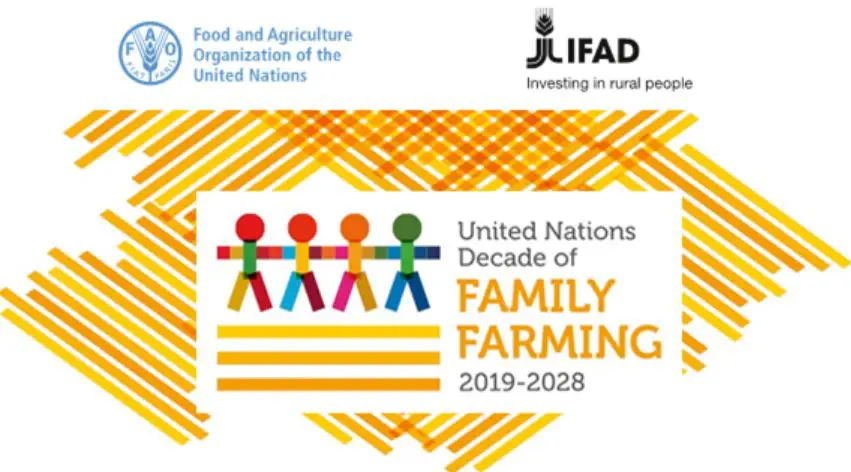Table of Contents
Global Action Plan of the Decade of Family Farming | UPSC – IAS
United Nations Decade of Family Farming (2019-2028), was launched by the Food and Agriculture Organization (FAO) and the International Fund for Agricultural Development (IFAD). The UN Decade of Family Farming aims to shed new light on what it means to be a family farmer in a rapidly changing world, the important role they play in eradicating hunger and shaping our future of food. Family farming offers a unique opportunity to ensure (particularly in rural areas) :-
- Food security,
- Improve livelihoods,
- Better manage natural resources,
- Protect the environment and
- Achieve sustainable development,
The Decade of Family Farming provides an extraordinary opportunity for the United Nations to achieve its Sustainable Development Goals (SDGs) in an inclusive, collaborative and coherent way.
- A Global Action Plan was also laid out to boost support for family farmers, which provides detailed guidance for the international community on collective and coherent actions that can be taken during 2019-2028.
Family Farming: Concept and Significance - As per the FAO, “Family farming is a means of organizing agricultural, forestry, fisheries, pastoral and aquaculture production which is managed and operated by a family and predominantly reliant on family labour.”
- Provide healthy, diversified and culturally appropriate foods. They represent over 90 per cent of all farms globally, and produce 80 percent of the world’s food in value terms.
- Generate on and off-farm employment opportunities as they spend their incomes mostly within local and regional markets thus helping rural economies grow along with wider women’s participation.
- Ensure the succession of knowledge and tradition from generation to generation, and promote social equity and community well-being.
Some Key Facts on family farming | UPSC – IAS
- More than 80 percent of all farms globally are below two hectares.
- Family farms occupy around 70-80 percent of farmland and produce more than 80 percent of the world’s food in value terms.
- Women perform nearly 50 percent of farm labor but hold only 15 percent of farmland.
- 90 percent of fishers are small-scale operators, which account for half of the capture fisheries production in developing countries.
- Up to 500 million pastoralists rely on livestock rearing to make a living.
- Mountain farming is largely family farming.
- Family farmers include forest communities. Around 40 percent of the extreme rural poor live in forest and savannah areas.
- Traditional indigenous territories encompass up to 22 percent of the world’s land surface and coincide with areas that hold 80 percent of the planet’s biodiversity.
Challenges to Family Farming in the developing countries | UPSC – IAS
- Socio-economic challenges: Although family farmers produce most of food, they, paradoxically face poverty in developing countries with women farmers facing greater constraints. Rural youth are also highly vulnerable due to a lack of incentives for on-and off-farm employment opportunities.
- Shrinking land holding, as more than 80 percent of all farms globally are below two hectares therefore unable to reach economy of scale.
- Lack of access to resources, credit, infrastructure and technology to support the food production and marketing.
- Climate change as the environmental conditions on which they rely are under threat which necessitates adoption of climate resilient agricultural practices.
Actions include | UPSC – IAS
- Developing and implementing an enabling policy environment that support family farming at local, national and international levels;
- Supporting rural youth and women by enabling them to access productive assets, natural resources, information etc.
- Strengthening family farmers’ organizations and their capacities to generate knowledge and link traditional knowledge with new solutions;
- Improving family farmers’ livelihoods and enhancing their resilience to multiple hazards though access to basic social and economic services.
- Promoting sustainability of family farming for climate-resilient food systems
Conclusion | UPSC – IAS
Family and farm represent a unity that continuously co-evolves, fulfilling economic, environmental, social and cultural functions of the wider rural economy. Hence the Decade of Family Farming aims to create a conducive environment that strengthens their position, and maximizes their contributions to global food security and nutrition, and a healthy, resilient and sustainable future.




